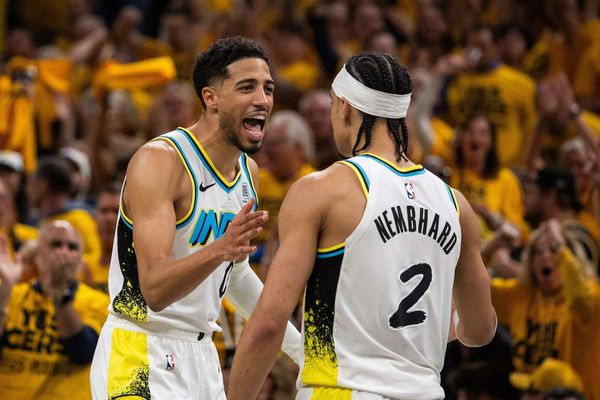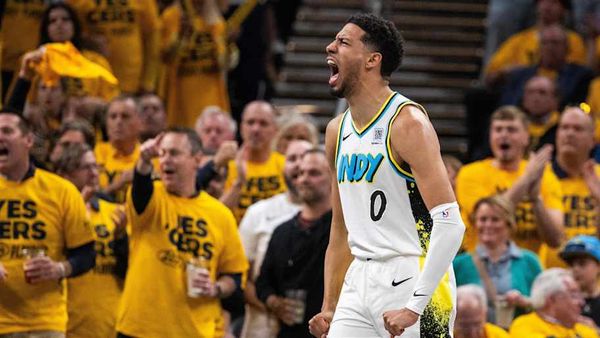
The maverick isn’t going it alone.
For the past four years, Lee Ainslie, 51, has been quietly handing over some investing responsibilities at his $10 billion hedge-fund firm Maverick Capital, according to people familiar with the firm.
He’s put a 39-year-old partner named Andrew Warford in charge of stock picks at Maverick’s main hedge funds, and given a bigger role to Riad Abrahams, 37, who was named chief strategist last year, said the people, who asked not to be identified because the firm is private.
So far, the changes are working. In a volatile year that’s felled hedge fund giants from Michael Novogratz to Michael Platt, Maverick is making money, and lots of it. Its main fund gained 15.6 percent through November, a period that left some of the biggest hedge funds with double-digit losses. It’s the fourth straight year that the New York-based firm is beating peers.
"They’re much better than average in picking stocks, especially when it comes to the consumer discretionary and information technology sectors," said Stan Altshuller, who analyzes portfolio data for hedge funds and institutional investors at Novus Partners.
Fraser Seitel, an external spokesman for Maverick, declined to comment on Ainslie, Warford and Abrahams’ behalf.
Power Shift
The shift in power, disclosed to investors, has left Warford, a former technology stock picker at Andreas Halvorsen’s Viking Global Investors, in charge of day-to-day investing at Maverick’s oldest and largest funds. Warford, who owns more than a quarter of Maverick, oversees the stock selection for about 80 percent of the firm’s assets. Heads of sector-focused teams, who used to approach Ainslie to pitch their best investment ideas, now speak to Warford.
Passing on investing responsibilities in a hedge fund can be a challenge for even the best firms, because they are built on the founders’ trading skill and reputation. Chris Shumway, who in 2010 handed over the investing role at his Shumway Capital Partners to a successor, shut his fund months later after clients pulled their money.
Others were more successful. Dan Sundheim, who joined Andreas Halvorsen’s Viking Global Investors as an analyst in 2002, became sole chief investment officer for the firm in 2014. Thomas Steyer began ceding oversight for Farallon Capital Management, the $20.5 billion firm he’d founded in 1986, years before he retired to focus on philanthropy and social change.
‘Painful, Embarrassing’
Ainslie, who co-founded Maverick in 1993 and took over sole responsibility for the entire portfolio in 1995, started handing over control of the main fund after 2011, a year in which it slumped more than 15 percent. In a letter to clients at the time, Ainslie, who had produced average annual returns of 14 percent from March 1995 through 2010, called 2011 “painful, embarrassing and frustrating.”
“Lessons regarding risk were seared into our collective memory,” Ainslie, who is known as a “Tiger cub” because he’s one of many hedge fund managers who worked at Julian Robertson’s Tiger Management, wrote in the letter. It was the firm’s second losing year after 2008.
After the losses, Ainslie shifted responsibility for day- to-day trading decisions at the Maverick funds to Warford, making him head of the stock selection committee in January 2012. A year later, he was named managing partner -- the same title Ainslie holds -- and took an ownership stake in Maverick Capital. According to filings, Warford owns between 25 percent and 50 percent of the firm.
Heir Apparent
While that makes him Ainslie’s heir apparent, investors said they expect the founder will continue to be involved for many years. Ainslie still talks stocks, coaches analysts and oversees the funds’ portfolio management committee. He also spends time watching macroeconomic indicators for global risks, both for the main hedge fund as well as the firm’s smaller funds: a venture capital vehicle and two funds of hedge funds, including one that specializes in emerging managers.
Ainslie hired Warford, a former captain of the tennis team at Notre Dame University, in 2003 after an 18-month search for a head of Maverick’s technology sector investments. Warford’s team was consistently one of the strongest performers at Maverick, according to two investors, and in a sector Ainslie considered among the most challenging.
The son of an orthodontist, John Warford, who served as mayor of Bismarck, North Dakota from 2002 to 2014, Andrew Warford got an early start investing through Notre Dame’s Applied Investment Management program, a course that lets undergraduates help manage a real stock portfolio.
Ainslie began elevating Warford’s role in early 2011, when he asked Warford to improve collaboration across the six sector teams, according to an investor letter from the time. Essentially, Warford’s task was shaping other teams to function like his, investors said. He insisted sector heads be held accountable for every position in their portfolios, including even the smallest holdings suggested by analysts.
Hard Data
As Warford took over responsibility for stockpicking, Ainslie turned to a quantitative team, first started in 2006, to help monitor risk. He tapped Abrahams, a former analyst at Blackstone Group who’d been working at or with Maverick since 2003, to lead the charge.
The firm’s risk technology now makes recommendations based on 25 factors, weighing things like the momentum of stocks and hedge fund crowding in positions. The technology flashed a warning in early May of this year, said one investor, and helped the firm avoid a sell-off in risk assets.
The quants’ most visible contribution has been the development of MavRank, a program that evaluates which positions are most likely to succeed or fail, investors said. It’s meant to replace boardroom arguments over which position deserves the most exposure with hard, computer-produced data.
Ackman, Einhorn
The new, more disciplined process has resulted in a drop in the number of wagers Maverick makes, from roughly 150 core positions in its portfolio in 2011 to about 100 this year. That’s the most concentrated the fund has been since 1993. Maverick’s top U.S. stock holdings as of Sept. 30 included Liberty Global Plc, Aramark and Alphabet Inc., according to filings.
The changes seem to be working. The main Maverick Fund rose almost 16 percent in 2012, 17 percent in 2013 and 8.5 percent last year, according to a person with knowledge of the matter.
This year, Maverick is making money again, even as formerly top-ranked firms suffer large losses, including a 17 percent decline through November by Bill Ackman’s Pershing Square Capital Management and a 21 percent drop by David Einhorn’s Greenlight Capital.
Platt this month said he’s shutting down his $8 billion hedge fund BlueCrest Capital Management, and Fortress Investment Group LLC earlier this year closed the macro business run by Novogratz after losses and redemptions.
According to Altshuller, much of Maverick’s edge comes from technology stockpicking, which is the area Warford began overseeing 12 years ago. From 2003 through this year, Maverick generated an average of 6.9 percent per year of "alpha," or returns above the benchmark, in its technology sector holdings, he said based on an analysis of equity positions in public filings.
But good stockpicking alone isn’t enough, he said. "Anytime you have a manager that continually invests in the future and wants to become better, they’re always going to win out against managers that are comfortable with their existing processes."
--With assistance from Katherine Burton.
To contact the reporter on this story: Simone Foxman in New York at sfoxman4@bloomberg.net To contact the editors responsible for this story: Christian Baumgaertel at cbaumgaertel@bloomberg.net Ben Steverman







